18+ Sample DNR Forms
-
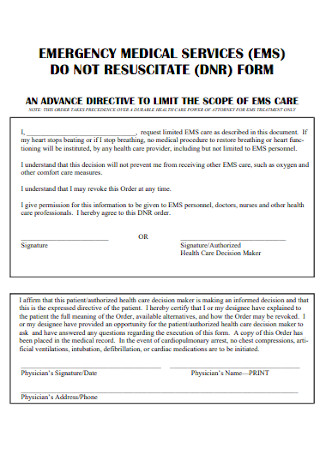
Medical Do Not Resuscitate Form
download now -
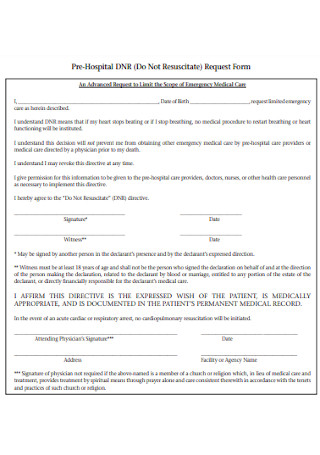
Pre-Hospital Request Form
download now -
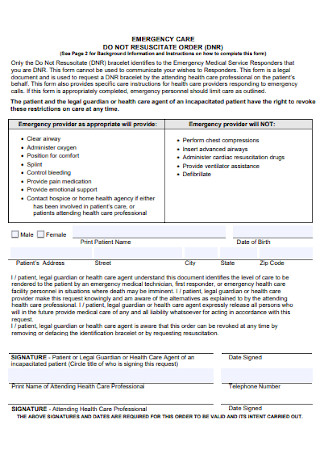
Do Not Resuscitate Order Form
download now -
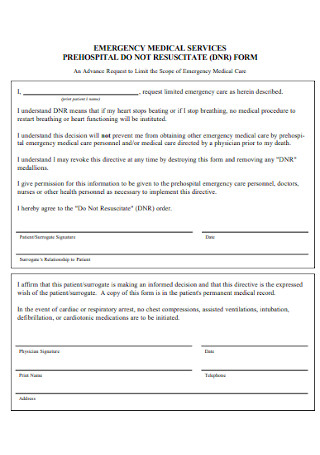
Pre-hospital Do Not Resuscitate Form
download now -
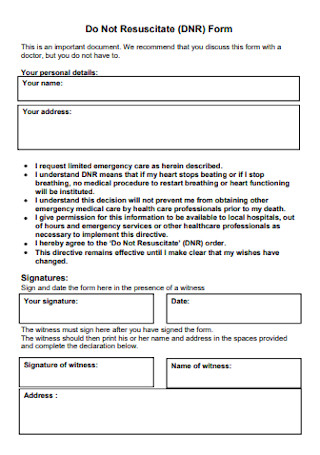
Sample Do Not Resuscitate Form
download now -
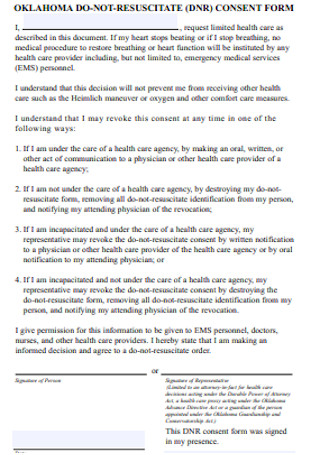
Do Not Resuscitate Consent Form
download now -
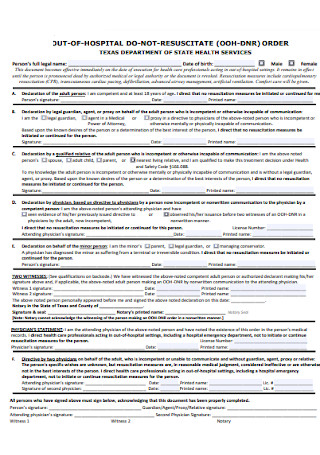
Out of Hospital Do Not Resuscitate Form
download now -
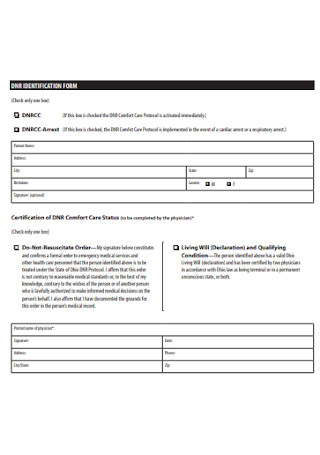
DNR Identification Form
download now -
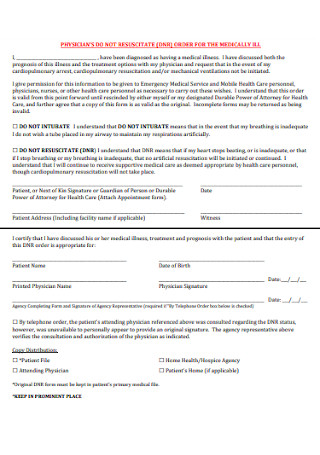
Physician Do Not Resuscitate Form
download now -
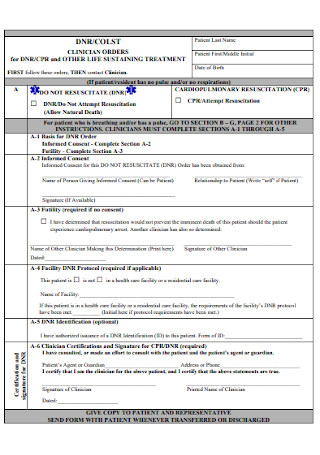
DNR Clost Form
download now -
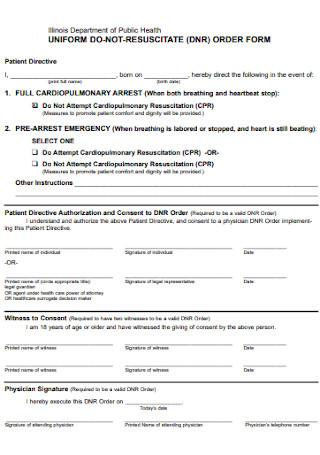
Uniform DNR Order Form
download now -
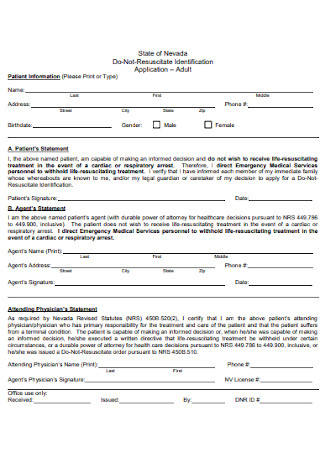
Do-Not-Resuscitate Identification Form
download now -
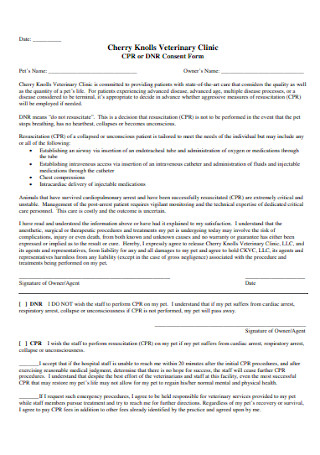
CPR or DNR Consent Form
download now -
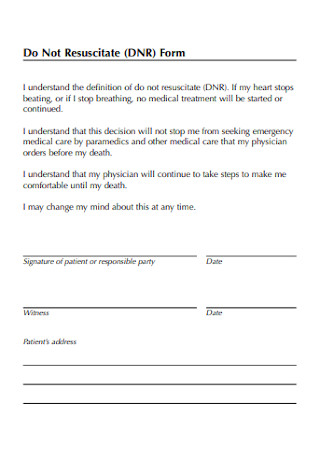
Do Not Resuscitate Form Format
download now -
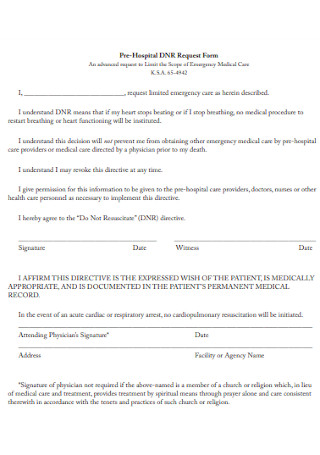
Pre-Hospital DNR Request Form
download now -
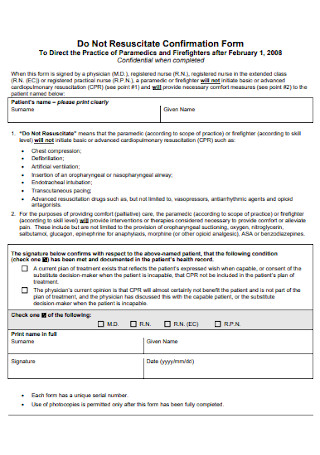
DNR Resusciate Confirmation Form
download now -
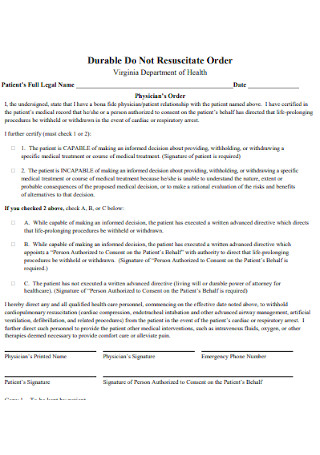
Durable Do Not Resuscitate Order Form
download now -
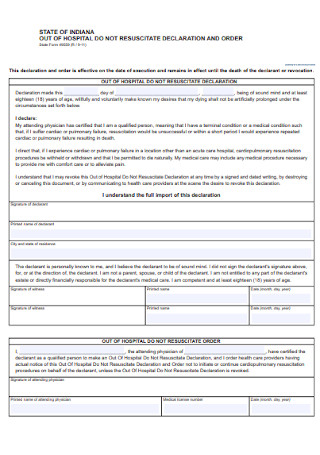
DNR Declaration Form
download now -
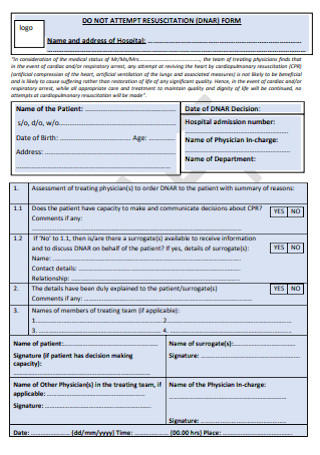
DNR Attempt Form
download now
FREE DNR Form s to Download
18+ Sample DNR Forms
What Is a DNR Form?
A DNR Form Is Appropriate in Following Conditions:
How To Create a DNR Form?
How to Get a Do Not Resuscitate Order Removed?
Who Needs to Fill Out a DNR Form?
What Are DNR Forms and How Do They Work?
What Happens If You Don’t Follow a DNR?
The wording on a do not resuscitate form may differ based on the state you live in. A copy of the completed and signed form should be given to the patient’s doctor as well as the hospital. DNRs are simple to fill out, but it’s critical to do it correctly so that your desires are carried out. A DNR form, or “do not resuscitate” order, is one of the most significant legal documents you can have when it comes to end-of-life care and planning. Are you looking for some printable Do Not Resuscitate (DNR) form that you can use? Then you came to the right place, scroll down below to know more about a Do Not Resuscitate Form and download our editable templates!
What Is a DNR Form?
A Do Not Resuscitate order (DNR) is a medical document that tells medical workers to stop conducting life-saving procedures such cardiopulmonary resuscitation (CPR), endotracheal intubation, and defibrillation. The majority of patients who request a DNR are near death. In the event of a coma or other major accident or sickness, people can utilize them to stay off life support. The letters DNR stand for “do not resuscitate.” If you stop breathing or your heart stops beating, a DNR order advises medical workers not to employ cardiopulmonary resuscitation (CPR), electric shock to the heart, artificial breathing systems, or other invasive procedures to revive you.
Emergency and hospital care workers will attempt to resuscitate a patient who has stopped breathing or has no heartbeat if there is no DNR in place. Medical workers may refer to a Do Not Resuscitate Order as a “no-code” or “let natural death” order, but the concept is the same. A Do Not Resuscitate Form, also known as a DNR Form, is an end-of-life medical directive that tells health care providers to refuse life-sustaining treatment at the patient’s request. In the event of a medical emergency, those who opt to get a DNR order can rest confident that no resuscitation measures will be used – it’s vital to understand what a DNR is before signing. There are practically no variations between the various sorts of DNRs because a DNR form is a unique document governing distinct forms of treatment.
Depending on where you live, DNR paperwork may go by the following names:
- DNAR (Do Not Attempt Resuscitation)
- AND (Allow Natural Death)
- POLST (Physician Orders for Life-Sustaining Treatment)
- MOLST (Medical Orders for Life-Sustaining Treatment)
If you are planning to write a DNR form, you should also prepare all important estate and end of life planning documents such as the:
- Last Will and Testament
- Medical Power of Attorney
- Living Will
A DNR Form Is Appropriate in Following Conditions:
End-of-life planning is a difficult topic to broach, to say nothing of navigating. But the truth is that we will all have to deal with this issue at some point in our lives. Obtaining your own DNR paperwork is a serious undertaking, as it deals with life and death issues. Listed down below are the appropriate scenarios wherein you can use a DNR form:
How To Create a DNR Form?
Doctors, EMTs, and other health workers are legally bound to follow your medical decisions if you have a DNR and may not attempt CPR, ACLS, or other life-saving methods if you have a DNR. A DNR must be signed by a physician. Your doctor will supply you with DNR forms specific to your state and will countersign them with you. Learn more about creating a DNR form below:
1. Speak to your doctor
A Do-Not-Resuscitate Order (DNR) is a medical directive that instructs doctors and other first responders to refrain from performing CPR if a patient’s breathing or heart rate stops. The DNR, also known as a “no code” or “allow natural death” order, is created in collaboration with a physician, whose signature is necessary to put it into effect. The form can be filled out at the hospital or at home, but it should be kept with other medical records so that all caregivers are aware of your wishes. Because filing a DNR is a matter of life and death, the document certifies that the patient is of “sound mind” – that the choice to reject CPR was taken voluntarily and with full knowledge of the consequences.
2. Decide on your future medical treatment
The DNR, contrary to popular belief, is not a blanket proclamation that covers all medical interventions. It is only concerned with cardiopulmonary resuscitation. Other forms of treatment, such as medicine and chemotherapy administration, testing, and the full array of supports available in today’s medical arsenal, are typically excluded. A DNR should be a part of a larger medical care strategy. Patients have the right to select whatever treatments they get and should be in charge of their own treatment – but things can get complex if the patient is unconscious or otherwise unable to interact with medical personnel or family members. A “living will” or “advanced directive” is the ideal way to establish these more detailed care directions.
3. Use a form that is provided by the hospital
If you are now considering using a DNR form, talk it out with your doctor first and the doctor or hospital will then provide you with a form stating that you wish to no longer be revived if your heart stops beating all of a sudden. Once you are done filling out the form, you can now submit your form to your lawyer for proof and afterwards to your doctor so that the whole hospital would be able to know that you are a Do Not Resuscitate patient.
4. Prepare all important documents once you die
Since you have already decided that you wish to no longer be revived once your heart stops, its right time to prepare all necessary documents that will be needed once you die. This can save time for your family who will be left with your estates and your other properties. Listed down below are some of the directives that you can include:
- Last will and testament – A Last Will and Testament is a legally enforceable document that allows you to plan ahead of time how you want your assets divided. You get to decide how your real estate, autos, heirlooms, money, and everything else of worth you hold at the time of your death will be distributed.
- Naming a personal representative – This is the individual who will make certain that everything in your life is in order. Paying bills, deactivating credit cards, and contacting banks and other businesses are all examples of this. In the management of your estate, Personal Representatives play the most important role. You must pick someone who is truthful, trustworthy, and well-organized. A Personal Representative must be at least 18 years old and not a family member.
- Set up a family trust – A trust is essentially a bank account managed by an independent individual (the trustee) who can only spend money from the trust for the benefit of another individual (the beneficiary). A Trust is especially handy if you are divorced and have little children. These accounts allow you to leave your fortune to your children while avoiding concerns that your ex-spouse will misuse their inheritance. You can also set restrictions on how Trust funds can be spent.
- Medical power of attorney – A medical power of attorney is a legal document that appoints someone to act as another person’s health care agent. The agent has the power to make medical decisions and is responsible for ensuring that doctors and other medical workers deliver required and appropriate care in accordance with the patient’s preferences. This includes care for those who are nearing the end of their lives.
- Living Will – One sort of advance directive is a living will. It’s a legally binding document. It explains what therapies you would prefer if you were terminally ill or in a vegetative state. These could be medical therapies or treatments aimed at extending your life. You can’t name someone to make decisions for you in a living will.
5. Store your DNR in a safe place
While a DNR should prevent a patient from receiving CPR in a hospital setting, it may not affect treatment at home. Patients are frequently given a bracelet or other identifying item that would be visible to first responders and others in an emergency, non-hospital scenario to help guarantee that the Do-Not-Resuscitate intention is conveyed. It is critical that medical personnel are aware that you have completed DNR documents and do not want to be resuscitated. Give a copy of the form to your doctor, any medical specialists or health professionals who may be caring for you, and your Health Care Proxy to ensure that your caregivers and other medical professionals are aware that you’ve signed a DNR. In addition, ensure a copy of your DNR form is publicly displayed in your house or on your person so that emergency medical responders are aware that resuscitation is not an option. Your doctor can assist you in obtaining an official DNR wristband, which you can wear at all times to alert emergency medical responders and other healthcare providers that you have signed a DNR.
FAQs:
Speak with your doctor about revoking a DNR. Furthermore, you should remove any documentation that claims the DNR, such as bracelets, wallet cards, or other indicators that emergency officials might find.
Those with terminal conditions or who are at high risk of stroke, heart attack, or respiratory arrest frequently think about obtaining a DNR form. Even those in excellent health should consider signing a DNR form if they are adamant about not being resuscitated or intubated once their breathing or heartbeat has stopped.
A DNR form may be included in a living will or advance directive, which both allow you to express your preferences for end-of-life care in the event that you are unable to articulate them when the time comes. Your DNR will be recorded in your medical record if you are admitted to a hospital. You can choose between a “prehospital” or “out of hospital” DNR in an emergency circumstance, which advises emergency medical workers not to attempt resuscitation or intubation. In this circumstance, make sure to put your DNR in a conspicuous location so that first responders can see it; otherwise, they won’t know not to try to revive you.
A DNR must be signed just like any other legally binding instrument. Any physician who treats you must recognize and follow your DNR papers once they have been approved and filed in your medical records. If a DNR is not followed, the person who did not follow the DNR may face legal action. Furthermore, your family will not be able to force you to sign a DNR form against your will. Only you have the authority to revoke your DNR form unless you have designated someone to act as your health care representative (either inside the DNR itself or through a medical power of attorney).
How to Get a Do Not Resuscitate Order Removed?
Who Needs to Fill Out a DNR Form?
What Are DNR Forms and How Do They Work?
What Happens If You Don’t Follow a DNR?
A DNR is only used when the patient’s heart or breathing has stopped working. A patient may continue to get medical treatments, drugs, surgeries, and operations despite a DNR. Are you interested in getting a DNR form? Download our templates.
